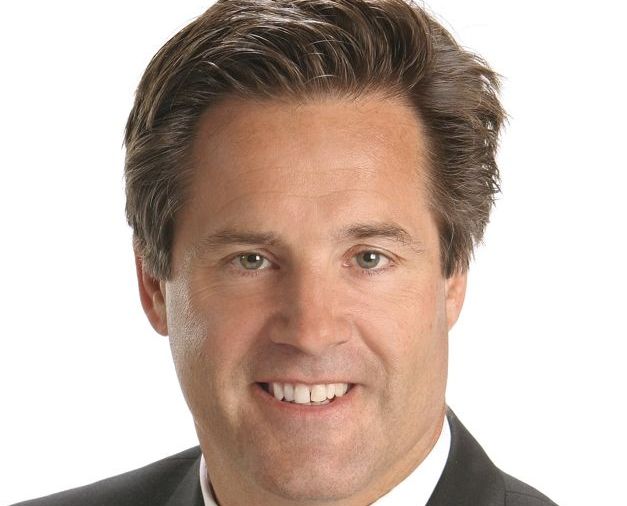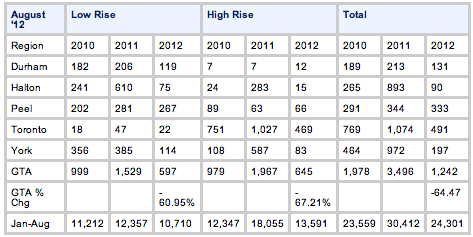The Energy Report: Keith, considering that natural gas prices are still near all-time lows, can you still argue that fracking has improved North American energy markets?
Keith Schaefer: In just a few short years, fracking grew the supply of natural gas way ahead of demand. The price of natural gas fell from $8–9/thousand cubic feet (Mcf) to $2/Mcf! Natural gas is the low-hanging fruit for the energy sector and for consumers. Cheapened feedstock provides a huge boom for American business.
TER: Have fracked oil prices kept pace with falling natural gas prices?
KS: It has not declined by the same degree, but it has lowered the cost of North American oil. West Texas Intermediate (WTI) used to be the major benchmark for oil around the world. Now, WTI is only a benchmark for a small area of the United States and Canada. In addition, the flood of supply coming out of new shale oil wells in North Dakota and Texas is overwhelming the refinery complex in the Gulf Coast, which is about 50% of North America’s refinery capacity.
TER: Is there a glut of gasoline? Prices for consumers are certainly high.
KS: That’s a great question. The short answer is no. But the long-term answer is yes. People are saying, OK, how come gas prices at the pump are so high when we’ve got all this oil? What’s going on? Here is how the game works: the refineries are moving their production flows to produce the least amount of driving gasoline possible, and the most amount of other refined products, like home heating oil fuel, diesel, kerosene and jet fuel. These are products they can export, in which case they get to use the Brent prices, which are 15% higher than WTI prices. These refineries generally operate on skinny-to-average margins, so 15 points is huge for them. That is why the price of retail gasoline for driving is 50% higher than it was in 2008.
Let me give you an example. I’m in Vancouver. We sell gas by the liter, not the gallon. Back in 2008, we had an uncanny relationship where if oil was $100 a barrel (bbl), gasoline was $1 a liter (L) at the pump. If it was $110/bbl, it was $1.10/L. If it was $1.35/L in Vancouver, oil was $135/bbl. Now, gasoline is $1.35/L, but oil is only $96/bbl. Why? Because the refineries are producing the least amount of gasoline, and the most amount of other refined products.
TER: Does fracking lower oil production costs?
KS: As a rule of thumb, the cost of production for most shale plays in North America is $40–45/bbl, which is not that much different from costs using conventional methods. It is above-ground logistics that cause lower prices for fracked oil. We don’t have enough pipelines to efficiently transport the fracked oil to the refineries. Consequently, supply backs up at the hubs, creating big discounts. For example, in late June, Canadian oil and Bakken oil were at huge discounts, almost $20/bbl to WTI. Because of pipeline disruptions and refinery downtime, Canadian producers were receiving under $70/bbl for their oil. But only 2½ months later, the logistics are running smoothly and Bakken oil is now selling at only a $3/bbl discount to WTI.
TER: Why do we see regional price differentials at the pump?
KS: Logistics. Here is an example. Recently, BP Plc’s (BP:NYSE; BP:LSE) Cherry Point refinery, which is just south of the Canadian border, went down. The next day, gas prices jumped $0.30 per gallon from Seattle to San Diego.
It’s not like we have no new refining capacity. Even though no new refineries have been built since ’76 in the U.S., refineries have been expanding. Royal Dutch Shell Plc (RDS.A:NYSE; RDS.B:NYSE)and Saudi Aramco have spent $10 billion during the last few years, doubling the size of their Motiva refinery in Texas from 300,000/bbl per day (bblpd) to 600,000/bblpd. It immediately ran at full capacity. But, then, an industrial accident took the new expansion offline for nearly a year, which boosted the retail price.
TER: Why is fracking politically controversial?
KS: Scientific studies have shown that fracking is not an environmental issue. It does not contaminate the ground water. There is usually more than a mile of granite between where the fracking takes place and the water table. On the other hand, the government of British Columbia has released a study finding that fracking causes earthquakes. And there is seismic activity associated with fracking and saltwater disposal wells, but that takes place in the formation where the fracking is occurring. The quakes are no different than any of the millions of micro seismic events that happen around the world every day. Of course, there is an impact. Blasting for mining creates seismic events. Building a dam creates seismic events. Filling a large manmade lake creates seismic events, because water is heavy. Fracking is no different.
It is the fierceness of emotion that is the big issue here. People get nervous about the safety of their water supplies and say, “Hey, prove to me that fracking is really safe!” Industry has responded by saying, “Look, here’s the science. We’ve been doing this for 50 years. No need to worry, it’s all good.” But that’s not what people need to hear. People need to hear, “Hey, we hear that you’re really concerned about this, that it’s a big issue for you. Let us come together at a community hall and talk about it.” That would be more effective than just taking out ads that say, (a) we bring so many jobs to the area, why are you bugging us? and (b) we’ve done this for decades, why are you bugging us? That kind of attitude is not going to win any arguments.
TER: Are drought conditions in the Southwest and Midwest affecting the availability of water for fracking?
KS: Due to drought, the price of water for oil and gas companies has more than doubled in the Midwest and Texas. Some of the oil and gas companies are not drilling as much as they said they would this year because they need to figure out where to get the water and how much they want to pay for it. Even though the amount of water used by the industry isn’t huge compared to irrigation, there are areas where the oil industry is bidding for water rights against farmers. The industry needs to be very careful about public relations. Otherwise it becomes a case of the big guy against the little guy.
TER: Are there any technological fixes to that issue?
KS: Yes. Firms involved in the fracking supply chain are figuring out how to source, treat, recycle and dispose of water efficiently. One company that comes to mind is Ridgeline Energy Services Inc. (RLE:TSX.V). It has a proprietary water recycling technology. EOG Resources Inc. (NYSE: EOG) is a Ridgeline client, as is Pure Energy Services Ltd. (TSX:PSV). These companies are starting to recycle their fracking water, which is great.
Other companies doing water management include GreenHunter Energy (GRH:NYSE:MKT). That’s Mark Evans’ deal from Magnum Hunter (MHR: NYSE.A). This company is determined to use saltwater disposal wells as its entrée into the water management sector. Another company is Poseidon Concepts Corp. (PSN:TSX). It has a water storage product and is branching out into more vertically integrated work in the water sector. There are lots of companies experimenting with this, and for good reason—there are very big margins, 50–85% gross margin. That’s fantastic. It beats the pants off any other service in the oil patch. Investors should be taking a strong look at fluid and water service companies.
TER: Aside from the Bakken shale, what are the most exciting international sources of shale oil and gas?
KS: The only other notable proven deposit of size is the Vaca Muerta shale in Argentina. There are a few Canadian juniors down there, but the Argentine government has started to nationalize part of YPF SA (NYSE: YPF). Plus, some permits were pulled from juniors by provincial regulators. That put a huge chill in the market for these stocks. They are well funded and cashed up, but the market’s just not going to care about them until there’s real production growth.
European shales have been fairly slow to take off. Poland’s been on the hot list for a while, but nothing’s happened. During the next two to three quarters, we could see a few wells get plunked down in New Zealand. That looks like a fairly thick formation. If it gets going, it could be a big win for investors next year.
TER: What about the oil and gas shale near Paris, France?
KS: Fracking is still banned in France. ZaZa Energy Corp. (ZAZA:NASDAQ) dropped its French play and is now focused on the Eagle Ford shale and the Eaglebine in Texas.
TER: Could fracking be banned in the U.S., either in certain areas or in its entirety?
KS: Fracking will never be banned in the U.S. But if it did happen, businesses would go bankrupt left, right and center. Many companies are hooked on cheap gas. There would be widespread bankruptcies and unemployment. Power companies are using cheap gas instead of coal. The U.S. reduced its greenhouse gas emissions more than any other country in the world over the last two to three years because of shale gas.
TER: What technological changes will keep fracking profitable, while reducing its environmental footprint?
KS: A company called GasFrac Energy Services Inc. (GFS:TSX) has been trying to get the industry to start using liquid petroleum gas (LPG) for fracking, instead of injecting water into the ground. LPG is propane, which is a naturally occurring substance in the formation, so it doesn’t damage the formation, as water can. Unfortunately, the company is not having very much success. But the industry is doing a lot of research into food-grade fracking fluid. The idea is to make fracking fluid as green and environmentally friendly as possible. That’s a couple of years away, but it’s only a matter of time.
TER: Any other names on the cutting edge of fracking technology?
KS: Raging River Exploration Inc. (RRX:TSX) has a big play in the Viking formation in Saskatchewan that is very profitable. Its water flood technique is returning incredibly cheap oil. It got the first half million barrels of oil out at about $30–35/bbl, and the last half million barrels at $5–10/bbl. It is at the forefront of recovery technology. Normally, a firm is lucky if fracking returns 10–15% oil. But with the water floods, the recovery factor can go way up. That is great news for Raging River stockholders.
Renegade Petroleum Ltd. (RPL:TSX.V) is also working in the Viking formation, and it has two other upcoming plays worth watching. One is the Slave Point play in Red Earth, which is north of Edmonton. Pinecrest Energy Inc. (PRY:TSX.V) has been involved. Renegade will drill the first well later this year. If it can prove up one or two wells, it has a big enough land package to allow a lot of new locations to open up. Renegade also has a really interesting conventional play in southern Saskatchewan called Souris Valley. It’s turning out to be a lot more profitable than the company had originally thought it would be.
TER: What is your bottom-line message on the future of fracking?
KS: Mainstream public attention on water management isn’t a bad thing. It makes the industry do things that should get done. Fracking water should be food grade. The market rewards stocks for doing the right thing. There’s nothing that the market hates more than uncertainty. If the industry starts to lose what I call its “social license” in the United States, that loss will have a very big impact on valuations. Companies are incentivized to do the right thing, to do it well—and to do it fast. That’s why we will soon see a resolution to the fracking issue.
TER: Thank you for chatting with us today.
KS: A pleasure as always.
Keith Schaefer of the Oil & Gas Investments Bulletin writes on oil and natural gas markets. His newsletter outlines which TSX-listed energy companies have the ability to grow and bring shareholders prosperity. Keith has a degree in journalism and has worked for several dailies in Canada but has spent the last 15 years assisting public resource companies in raising exploration and expansion capital.
Want to read more exclusive Energy Report interviews like this? Sign up for our free e-newsletter, and you’ll learn when new articles have been published. To see a list of recent interviews with industry analysts and commentators, visit our Exclusive Interviews page.
DISCLOSURE:
1) Peter Byrne of The Energy Report conducted this interview. He personally and/or his family own shares of the following companies mentioned in this interview: None.
2) The following companies mentioned in the interview are sponsors of The Energy Report: Royal Dutch Shell Plc.
3) Keith Schaefer: I personally and/or my family own shares of the following companies mentioned in this interview: GasFrac Energy Services Inc., Poseidon Concepts Corp., Raging River Exploration Inc., Renegade Petroleum Ltd., Ridgeline Energy Services Inc. and ZaZa Energy Corp. I personally and/or my family am paid by the following companies mentioned in this interview: None. I was not paid by Streetwise Reports for participating in this story.


























